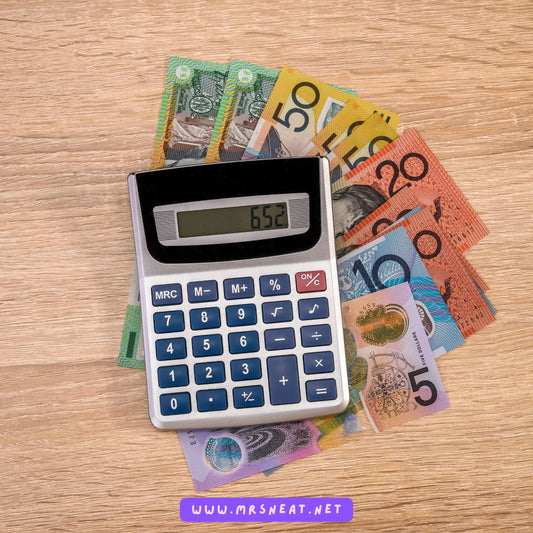
10 Genius Ways to Stay Organized with a Weekly Hourly Planner
maris wariShare
You know that feeling—alarm goes off, you snooze it twice, rush through breakfast, open your laptop and realize you’ve missed a meeting, forgot to pick up groceries, and oh—your kid’s school event was today?

One day can spiral into a week before you even notice.
I lived in that scramble for months: juggling work calls, deadlines, random errands, and somehow still squeezing in a late-night Netflix binge (guilty).
Time felt slippery, and my to-do list felt like a game I was losing.
That’s exactly why a Weekly Hourly Planner changed everything for me.
Instead of vague “to-dos” floating in my head or a jam-packed daily list that never fits reality, the Weekly Hourly Planner breaks your week into bite-sized hours.
It forces you to see the actual shape of your time—what’s booked, what’s free, where your energy dips, and where you’re habitually double-booking yourself.
This post is for anyone who wants to stop reacting and start designing their weeks.
Whether you’re a student balancing classes and study, a busy professional with back-to-back meetings, a parent coordinating family logistics, or a freelancer managing multiple clients—the Weekly Hourly Planner is the tool that turns chaos into calm.
Over the next sections I’ll explain what a Weekly Hourly Planner is, why it works and walk you through 10 genius ways to use one so your week actually feels doable.
Expect practical examples, tiny habit tweaks, and real-life stories—plus a friendly nudge to make the planner your new best habit.
Ready to stop surviving your week and start owning it? Let’s block that time like a pro.
What is a Weekly Hourly Planner?
When most people think of planners, they picture a simple to-do list or maybe a monthly calendar with birthdays and deadlines scribbled in.
A Weekly Hourly Planner takes things to a whole new level.
Instead of vague tasks like “work on project” or “exercise,” it breaks your week into hourly slots—literally mapping out your 168 hours so nothing falls through the cracks.
Think of it like GPS for your time.
A regular calendar might tell you where you’re going (“meeting on Tuesday”), but a Weekly Hourly Planner tells you how to get there (“meeting from 10–11 AM, prep from 9:30–10”).
That level of detail is what helps you see how your commitments actually fit—or don’t—into your schedule.
Here’s what makes it powerful:
- Time blocking: Instead of bouncing between tasks, you dedicate chunks of hours to specific categories—like “deep work,” “errands,” or “family time.” This reduces decision fatigue.
- Awareness of patterns: By filling in each hour, you start to notice when you’re most productive, when you tend to procrastinate, and which tasks eat up more time than you expect.
- Built-in accountability: Once it’s on paper (or screen), it feels more real. You’re less likely to scroll Instagram for an hour if your planner says “finish presentation” from 3–4 PM.
When I first used one, I realized my mornings vanished into “small stuff” like email, Slack messages, and “quick” errands.
My afternoons—when my brain actually focused best—were wasted on admin tasks. The planner helped me flip that around.
Suddenly, mornings became sacred creative time, and emails got pushed into one batch session at 4 PM.
So in short, a Weekly Hourly Planner isn’t just about organization—it’s about awareness.
It shows you the truth about how you spend your days, and then it gives you the power to redesign them.
Why a Weekly Hourly Planner Works
Here’s the truth: time management isn’t just about discipline—it’s about psychology.
And that’s exactly why a Weekly Hourly Planner works so well.
It taps into the way our brains are wired, making productivity feel natural instead of forced.
Let’s break down the magic:
1. Gamification
Our brains love games. When you fill in those hourly slots and check them off, it feels like scoring points.
Even blocking out “lunch” or “gym” creates mini wins that keep you motivated. Instead of a never-ending to-do list, you’re playing a game with your day.
2. Visual Progress
We humans are visual creatures. Seeing your whole week laid out in hourly blocks is like looking at a map—you instantly spot gaps, overlaps, and wasted time.
That visual feedback helps you course-correct faster than mental math ever could.
3. Accountability
A planner is like a silent coach. Once “Write blog draft (9–11 AM)” is written down, it’s harder to ignore.
Sharing it with a partner, co-worker, or even posting it online can boost this effect. You’re not just accountable to yourself anymore—it’s real.
4. Energy Management
Not all hours are created equal. Maybe your brain is sharpest at 9 AM, but you’ve been wasting that window on laundry.
The planner helps you align your high-energy hours with high-focus tasks. Low-energy slots? That’s when you plan errands, chores, or Netflix.
5. Stress Reduction
One of the biggest causes of stress is uncertainty.
When your week is floating in your head, it feels overwhelming. Writing it down in hourly detail turns chaos into order.
You don’t have to juggle tasks in your brain—you just follow the plan.
I noticed this the first week I tried it.
I had a packed schedule—client calls, grocery runs, a family dinner, and workouts.
Normally I’d panic, thinking, How am I going to do it all? But once I slotted everything hour by hour, the panic melted. There was enough time—I just had to use it wisely.
That’s the beauty of the Weekly Hourly Planner: it doesn’t give you more hours, but it makes the ones you have feel longer, calmer, and more intentional.
10 Genius Ways to Use a Weekly Hourly Planner
1. Time Block Your Big Goals
Instead of just writing “work on thesis” or “launch new project” in the margins of your planner, block out the exact hours.
I once tried to finish a client project without time blocking—and of course, I procrastinated until midnight.
When I finally started using the Weekly Hourly Planner, I gave my project two sacred 3-hour slots on Tuesday and Thursday mornings.
Suddenly, I wasn’t scrambling—it was happening naturally, step by step.
Treat your planner like a contract with yourself. Block those big goals first, then let the smaller tasks fill in around them.

2. Schedule Breaks Before Burnout
Ever had those days where you’re glued to your laptop for hours, and by 3 PM you’re useless? Same.
I used to “push through” until I realized scheduling breaks actually made me more productive.
My planner now has 15-minute coffee walks built in. Sometimes I grab Starbucks, sometimes I just stretch on the balcony.
Plan downtime like you plan meetings. A short break at the right time can double your focus.

3. Turn Chores into Mini-Appointments
Laundry, cleaning, meal prep—they pile up if you don’t plan them.
I once skipped laundry for two weeks, and trust me, wearing old gym clothes to a Zoom call is not the vibe 😅.
With the Weekly Hourly Planner, I slot chores into off-peak hours—like Sunday afternoon or weekday evenings.
Treat chores as “appointments with yourself.” They’re just as important as work deadlines.
4. Protect Family or Me-Time
It’s easy to let personal time get swallowed by work or school. My planner has a pink block every Friday evening: “Dinner with family.” Non-negotiable.
Even if work piles up, that block stays sacred. Over time, I realized it wasn’t just a habit—it became an anchor that made my whole week feel more balanced.
Use your planner to honor what matters most—relationships, hobbies, rest.
5. Plan Meals and Grocery Runs
I used to wing it with groceries. That meant random takeout, spoiled veggies, and way too much McDonald’s.
Now? I set aside Sunday 10–11 AM to meal-plan, and Saturday 4–5 PM for groceries.
Having it in the Weekly Hourly Planner saves me money, time, and stress.
Link your planner with a simple meal tracker—it’s a game changer for health and your budget.
6. Study or Skill-Build Like a Pro
Students and lifelong learners, listen up: cramming at 2 AM is a recipe for brain fog.
A Weekly Hourly Planner lets you break study or learning goals into smaller, consistent blocks.
When I was prepping for an online course, I scheduled 1-hour study sessions three times a week. It felt way less overwhelming—and I actually retained more.
Spread learning throughout your week instead of one stressful cram session.

7. Build Health Habits that Stick
Working out, drinking water, meditating—they always sound easy… until life happens.
I once tried the “75 Hard Challenge” and failed on day 5, simply because I didn’t plan my workouts.
Now, my planner has gym sessions blocked as real appointments. Even a 30-minute walk gets its own slot.
Habits stick when they live in your planner, not just your head.
8. Tame Your Digital Distractions
Social media is a sneaky time thief. Instead of letting it eat hours, I block 30-minute “social scroll” sessions in the evening.
That way, I enjoy TikTok or Instagram guilt-free—because it’s planned. The rest of the day? Phone stays out of reach.
Your planner can be your shield against endless scrolling.
9. Use Color-Coding for Clarity
I’m obsessed with colors. My Weekly Hourly Planner looks like a rainbow, but it works:
- Blue = work
- Green = health
- Yellow = fun
- Pink = family
At a glance, I can see if my week is balanced. If it’s all blue, I know burnout is coming. The colors help me course-correct before it’s too late.
Make your planner visual—it should feel exciting to open it.
10. Reflect and Adjust Weekly
The planner isn’t just for planning—it’s also for reflecting.
Every Sunday evening, I spend 15 minutes reviewing: What worked? What felt rushed? What did I skip? The insights are golden.
For example, I noticed I always skipped my Thursday evening gym slot. Instead of beating myself up, I moved it to Saturday mornings. Problem solved.
Your planner isn’t rigid—it’s a flexible guide that grows with you.
By the time you start using even three or four of these hacks, your week stops feeling like a blur and starts feeling like something you actually control.
And the best part? It’s all laid out in one colorful, empowering Weekly Hourly Planner.
My First Month Using a Weekly Hourly Planner
When I first printed my Weekly Hourly Planner, I’ll be honest—I thought it might end up like every other planner I’d bought: half-filled pages, then abandoned on my desk.
But this one was different. Breaking things down by the hour felt intense at first, almost like micromanaging myself.
But after the first week, I realized it wasn’t restrictive—it was freeing.
Here’s how my first month looked, week by week:
Week 1: Reality Check
I filled out my entire week—work, errands, workouts, family time. By Wednesday, I noticed something shocking: my “free time” was actually just mindless scrolling.
I had three full hours a day disappearing into Instagram, TikTok, and random YouTube spirals.
Writing it down made me face the truth. I adjusted quickly—cutting that down to one planned 30-minute slot.
Week 2: The Energy Shift
This week, I started paying attention to when I was most productive. My planner revealed I was wasting mornings (prime brain time) on chores and emails.
So, I swapped things around: mornings became my “deep work” blocks, and chores moved to evenings.
The difference was incredible—I finished projects faster and actually had guilt-free time at night to relax.
Week 3: The Domino Effect
By now, the planner wasn’t just about work. I started using it for health too. I blocked out gym time three evenings a week, plus 10-minute walks after lunch.
I even added a meal prep session on Sunday mornings. Funny thing? Once health got its place in the planner, everything else felt easier.
I wasn’t dragging through the day anymore—I had more energy for everything.
Week 4: Balance, Finally
The last week of the month was the most eye-opening. I had blocks for work, family, chores, self-care, and fun.
Friday night family dinners? On the planner. Saturday morning coffee-and-reading session? On the planner.
It wasn’t about squeezing more in—it was about making room for what mattered.
By the end of that first month, I didn’t feel like a robot chained to a schedule. I felt lighter, calmer, and strangely empowered.
My week wasn’t a blur anymore—I could look back and see where my hours went. And for once, they went to the right places.
That’s the magic of the Weekly Hourly Planner: it doesn’t just track your time, it transforms your relationship with it.
One month in, I wasn’t just organized—I was finally in control of my life.
Common Mistakes to Avoid with a Weekly Hourly Planner
Like any new habit, using a Weekly Hourly Planner takes a little trial and error.
The good news? Most mistakes are super common—and super fixable once you notice them.
Here are the biggest ones I ran into (and what you can avoid):
1. Overfilling Every Hour
At first, I made the rookie mistake of packing every single hour with tasks. It looked beautiful on paper… until real life happened.
A traffic delay, a phone call, or just plain exhaustion, and suddenly my whole day collapsed like dominoes.
Fix it: Leave buffer space. Think of your planner like Tetris: you need gaps for things to “fall into place.”
2. Ignoring Small Tasks
I used to skip writing down “quick” things like checking the mail or calling my mom.
But those “quick” things added up, and suddenly my carefully planned day was off track.
Fix it: Write them in. Even a 10-minute task deserves a slot—it keeps your plan honest.
3. Forgetting Irregular Events
Annual bills, quarterly reports, birthdays, school plays—I forgot them all because they weren’t weekly habits.
When they popped up, they wrecked my plan.
Fix it: Use your planner alongside a monthly calendar. That way, you can pull in bigger-picture events when planning each week.
4. Being Too Strict
The first time I skipped a gym block, I felt like I’d “failed.” That all-or-nothing mindset made me want to quit.
Fix it: Think flexibility, not perfection. The planner is a tool, not a prison. If you miss something, reschedule—it’s that simple.
5. Not Reviewing Regularly
Some weeks, I filled in my planner on Monday… and never looked at it again. By Friday, it was useless.
Fix it: Build in a 5-minute check-in each night. Glance at tomorrow’s plan, tweak as needed. A little review keeps the whole system alive.
The key is remembering that your Weekly Hourly Planner isn’t about creating the “perfect” week—it’s about creating a realistic one.
The more honest and flexible you are, the more powerful it becomes.
Extra Tips for Success with a Weekly Hourly Planner
Once you’ve got the basics down, there are little tweaks that can turn your Weekly Hourly Planner from “useful” into “life-changing.”
These are the tricks I’ve picked up (sometimes the hard way!) that make planning fun, flexible, and actually sustainable.
1. Print Several Copies and Keep Them Handy
I can’t tell you how many times I sat down to plan and realized… the planner was buried under a pile of papers.
Now I keep extras: one on my desk, one in my bag, and a digital version on my tablet. No excuses—it’s always within reach.
2. Use Colors and Highlighters
Life is too short for boring planners. I started color-coding: blue for work, green for health, yellow for fun, pink for family.
Suddenly, I could see at a glance if my week was balanced—or if I was drowning in blue.
Plus, let’s be real, a rainbow planner is way more motivating.
3. Pair It with a Binder or Notebook
Loose pages get lost. A binder keeps everything in one place and lets you flip back through past weeks.
It’s surprisingly motivating to see your progress stacked up.
Some weeks might be messy, others smooth—but together they tell the story of your growth.

4. Go Digital (If That’s Your Style)
I love paper, but I also know some friends thrive digitally.
If that’s you, combine your Weekly Hourly Planner with apps like Google Calendar or Notion.
Block your main schedule digitally, then use the printable for reflection and notes.
The combo gives you the best of both worlds.

5. Set a Weekly Planning Ritual
For me, it’s Sunday evenings with tea and a cozy playlist. That’s when I lay out the week ahead.
Making it a ritual turns planning into something I look forward to, not just another chore.
6. Celebrate Wins, Big or Small
Every week, I circle one thing I’m proud of—whether it’s finishing a project, sticking to workouts, or even just making it through a rough week.
That little act of acknowledgment keeps me motivated to keep going.
These small adjustments don’t just make your planner prettier—they make it stick. Because the best planner isn’t the fanciest one, it’s the one you actually use.
Final Thoughts
After a full month of living with my Weekly Hourly Planner, I can honestly say this: it’s not just a piece of paper—it’s a mindset shift.
Before, I felt like time was something slipping away from me, no matter how hard I tried to “get organized.”
Now, time feels like something I own. Every hour has a purpose—whether that’s working on my goals, spending time with family, or even just resting without guilt.
The planner didn’t magically give me more hours in the day (if only!). What it gave me was clarity. I can see my week before it happens.
I can spot the bottlenecks, plan around energy dips, and carve out space for things that matter most.
It’s like going from wandering in the dark to walking with a flashlight—you still have to take the steps, but at least you know where you’re going.
And here’s the best part: it doesn’t have to be complicated. You don’t need to overhaul your entire life overnight.
Just start small—print out one copy, plan your next week, and see how it feels.
Chances are, you’ll notice an immediate difference: less stress, fewer “oops I forgot” moments, and more of that sweet feeling of control.
So, if you’ve been juggling chaos, feeling burned out, or wondering why your to-do list never seems to end, maybe it’s time to try something new.
The Weekly Hourly Planner Template isn’t just a tool—it’s a way to reclaim your hours, your energy, and your peace of mind.
Ready to give it a try?
Grab your printable Weekly Hourly Planner Template and let’s start designing weeks you’re actually excited to live.
Because your time is too valuable to waste—let’s make every hour count.
Related Articles:
- Want to Be More Productive and Organized? Try This Planner for All Your Wishlists!
- Stay Organized All Year with These Printable Monthly Covers & Calendars!
- Today Planner Template Printable - Stay Organized and Boost Productivity!
- Use This Cleaning Tracker to Make Your Cleaning Routine More Organized & Enjoyable!
- Easy Recipe Ideas + Free Printable Recipe Page Template for Organized Cooking!
FAQ: Weekly Hourly Planner
1. What is a Weekly Hourly Planner?
A Weekly Hourly Planner is a printable tool that helps you map out your week by the hour. It’s perfect for anyone who wants to manage time more effectively, balance responsibilities, and reduce stress.
2. Who should use a Weekly Hourly Planner?
Students, professionals, parents, entrepreneurs—basically anyone who feels like their schedule is overwhelming. If you want structure, this planner is for you.
3. How do I use a Weekly Hourly Planner effectively?
Start by filling in your fixed commitments (work, school, appointments). Then, schedule priorities like study time, workouts, or family activities. Leave room for breaks and flexibility so you don’t burn out.
4. Can I use it digitally instead of printing?
Yes! While many love the tactile feel of paper, you can also upload the template to apps like GoodNotes or Notability to use it on your tablet.
5. Why is hourly planning better than a regular weekly to-do list?
To-do lists show what you need to do, but not when to do it. An hourly planner ensures you allocate time slots so your priorities actually get done.
6. What’s the biggest benefit of using this planner?
Clarity and control. Instead of reacting to your day, you start leading it—with intention and purpose.



 https://www.linkedin.com/in/mariswari/
https://www.linkedin.com/in/mariswari/



